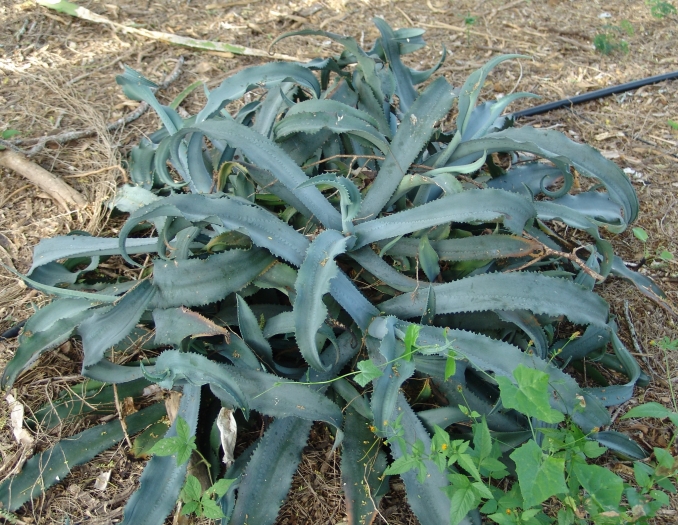Gypsum Century Plant
(Agave gypsophila)
Gypsum Century Plant (Agave gypsophila)
/
/

Drew Avery
CC BY 2.0
Image By:
Drew Avery
Recorded By:
Copyright:
CC BY 2.0
Copyright Notice:
Photo by: Drew Avery | License Type: CC BY 2.0 | License URL: https://creativecommons.org/licenses/by-sa/2.0/ | Uploader: Drew Avery | Publisher: Flickr |



















Estimated Native Range
Summary
Agave gypsophila, commonly known as Gypsum Century Plant, is an evergreen succulent native to the rocky cliffs and hillsides of Southwest Mexico. It reaches a height and width of 2-3 feet (0.6-0.9 meters), forming a rosette of wavy, spiny-edged leaves that are a distinctive powder blue-gray. The plant is notable for its panicles of orange and yellow flowers that bloom in the spring, attracting pollinators. The flowers are particularly showy, rising above the foliage on tall stalks, and they signal the end of the plant’s life cycle as it is monocarpic, flowering once before dying.
The Gypsum Century Plant is valued for its drought tolerance and striking foliage, making it a popular choice for xeriscaping, rock gardens, and as a specimen plant in areas with Mediterranean-like climates. It requires minimal maintenance, thriving in full sun and well-draining soils. Overwatering or poor drainage can lead to root rot. While it is Critically Endangered in its native habitat due to habitat destruction, it is cultivated worldwide. Gardeners should be aware that the plant’s sap can cause skin irritation, and its spines are sharp.CC BY-SA 4.0
The Gypsum Century Plant is valued for its drought tolerance and striking foliage, making it a popular choice for xeriscaping, rock gardens, and as a specimen plant in areas with Mediterranean-like climates. It requires minimal maintenance, thriving in full sun and well-draining soils. Overwatering or poor drainage can lead to root rot. While it is Critically Endangered in its native habitat due to habitat destruction, it is cultivated worldwide. Gardeners should be aware that the plant’s sap can cause skin irritation, and its spines are sharp.CC BY-SA 4.0
Plant Description
- Plant Type: Succulent
- Height: 2-3 feet
- Width: 2-3 feet
- Growth Rate: Moderate
- Flower Color: Orange, Yellow
- Flowering Season: Spring
- Leaf Retention: Evergreen
Growth Requirements
- Sun: Full Sun
- Water: Very Low, Low
- Drainage: Fast
Common Uses
Bee Garden, Bird Garden, Drought Tolerant, Fire Resistant, Hummingbird Garden, Low Maintenance, Rabbit Resistant, Rock Garden, Showy Flowers
Natural Habitat
Native to rocky cliffs and hillsides of Southwest Mexico
Other Names
Common Names: Blue Wave Agave
Scientific Names: , Agave gypsophila,
GBIF Accepted Name: Agave gypsophila Gentry